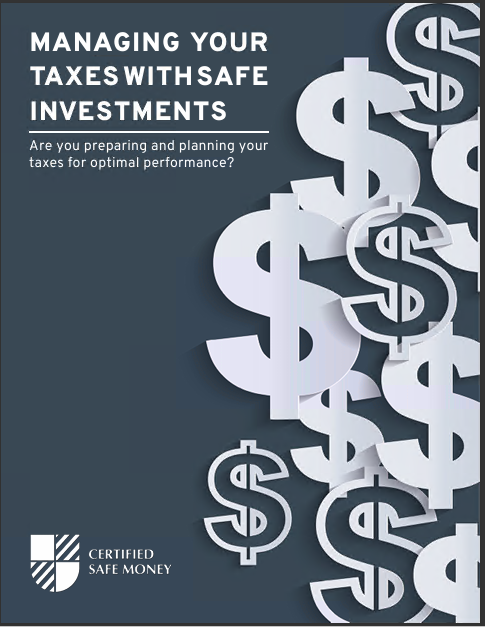Key Takeaways
-
Choosing an annuity requires you to balance long-term income security with flexibility for changing needs.
-
The decision should align with your broader retirement strategy, considering factors like inflation, tax implications, and your desired retirement timeline.
Why the Decision Matters
When you think about building financial security for retirement, annuities stand out as a stable option. They are designed to provide a stream of income that can last decades, which makes them appealing when compared to more volatile investments. But the choice of which annuity to buy and when to buy it is not one to take lightly. Your decision will influence how comfortably you live throughout retirement, how much risk you carry, and how well your savings withstand inflation and unforeseen costs.
Understanding the Role of Annuities in a Safe Money Strategy
Safe money investment options are focused on protecting your principal while providing predictable returns. Unlike stocks or other high-risk vehicles, safe money strategies prioritize security. Annuities fit well into this framework because they are built to guarantee income and shield you from market swings.
An annuity is essentially a contract between you and an insurance company. You contribute money either as a lump sum or through payments over time. In return, you receive regular income payments in the future. While the foundation is straightforward, the structure and types of annuities available today make the decision complex.
1. Evaluating Your Timeline
Your age, retirement horizon, and long-term needs should guide the type of annuity you select.
-
If you are in your 50s: You may still be accumulating wealth and want growth options while ensuring future security.
-
If you are in your 60s or early 70s: Income stability becomes more important, and immediate annuities or options with quick payouts may serve you better.
-
Beyond 70: Longevity planning matters most, and products designed for lifetime payouts can protect you from outliving your savings.
Matching the timing of the annuity with your expected retirement age ensures you benefit from the income stream exactly when you need it.
2. Income Needs and Lifestyle Planning
Ask yourself how much guaranteed income you require each month. Social Security may cover a portion of your needs, but it rarely covers everything. Consider:
-
Housing expenses (including taxes, insurance, and maintenance)
-
Healthcare costs, which typically rise as you age
-
Travel, hobbies, and other lifestyle goals
Your annuity should bridge the gap between your essential expenses and the income you already have from Social Security or pensions. If you expect large discretionary expenses, you might want more flexible annuity options.
3. Weighing the Risks and Guarantees
One of the key reasons people buy annuities is for the guarantees they provide. However, every guarantee comes with trade-offs.
-
Guaranteed income ensures predictability but may limit growth potential.
-
Market-linked growth options give you the chance to benefit from stock market performance, but they usually include limits or caps.
-
Longevity guarantees protect against outliving your savings, but often require sacrificing liquidity.
Balancing guarantees with flexibility is central to choosing the right annuity. Your appetite for risk and desire for security should be carefully weighed before committing.
4. Considering Inflation and Rising Costs
Annuities provide stability, but inflation can erode the real value of fixed payments over decades. For example, if your annuity pays $2,000 per month today, that same amount may feel much smaller in 20 years. When planning, consider:
-
Inflation-adjusted annuities, which increase payments over time.
-
Supplementing with investments that historically grow faster than inflation, such as a portion of equities or real estate.
Ignoring inflation risks can weaken the strength of your annuity over time.
5. Tax Implications of Annuity Income
Tax rules in the United States treat annuity payouts differently depending on whether they were funded with pre-tax or after-tax dollars.
-
Qualified annuities (funded with pre-tax dollars such as retirement accounts) are fully taxable upon withdrawal.
-
Non-qualified annuities (funded with after-tax money) are taxed only on earnings.
Since annuity income can affect your tax bracket and Social Security taxation, it is important to consult a tax professional. You should also consider how your withdrawals will interact with required minimum distributions (RMDs) if your annuity is inside a qualified retirement account.
6. Liquidity and Access to Funds
Unlike other investments, annuities often come with limited access to your money. Early withdrawals may lead to surrender charges and tax penalties. Before buying, consider:
-
How much of your savings you are comfortable locking away for decades.
-
Whether you have enough liquid assets for emergencies.
-
The timeline of when you will realistically need access to your funds.
Maintaining a balance between annuity commitments and more liquid investments ensures you don’t face unexpected challenges later.
7. Comparing Types of Annuities
There are several types of annuities, each with distinct features:
-
Immediate annuities: Payments begin almost right away, suitable for those already in retirement.
-
Deferred annuities: Payments start years later, often useful for those still building retirement funds.
-
Fixed annuities: Provide predictable, guaranteed payments.
-
Indexed annuities: Offer growth linked to market indices but with protective features against losses.
-
Variable annuities: Provide more investment options but also carry higher risks.
Choosing the right one requires aligning your retirement objectives with the specific features of each type.
8. Duration of Income Guarantees
You must decide how long you want income guarantees to last:
-
Lifetime income ensures you never outlive your savings.
-
Period-certain income guarantees payments for a specific number of years.
-
Joint-and-survivor options protect both you and a spouse.
Your decision should account for your health, longevity expectations, and whether you want your annuity to provide benefits to a surviving spouse.
9. The Cost of Waiting vs. Buying Now
Many people ask whether it is better to buy an annuity today or wait. In 2025, interest rate conditions and market performance directly impact annuity payouts. Historically, higher rates have led to stronger annuity returns. But waiting too long can mean you miss out on years of guaranteed income.
If you are within five years of retirement, it may be wise to review your options now instead of postponing the decision. Delaying could either improve your payout or leave you vulnerable to declining rates.
10. Integrating Annuities with Other Safe Money Strategies
An annuity should not stand alone. It works best as part of a diversified strategy:
-
Certificates of deposit (CDs) for short-term security.
-
Treasury bonds for government-backed safety.
-
High-yield savings accounts for liquidity.
By combining annuities with other safe money options, you spread risk while ensuring predictable income.
Building a Long-Term Mindset Around Annuities
Choosing the right annuity requires more than just comparing payout numbers. It requires foresight into how your needs will evolve over the next 20 or 30 years. By evaluating your timeline, income needs, inflation risks, and tax implications, you are more likely to select an annuity that will serve you well for decades to come.
If you are ready to secure your future with an annuity, reach out to a licensed professional listed on this website who can walk you through your specific options and tailor a strategy for your retirement.













